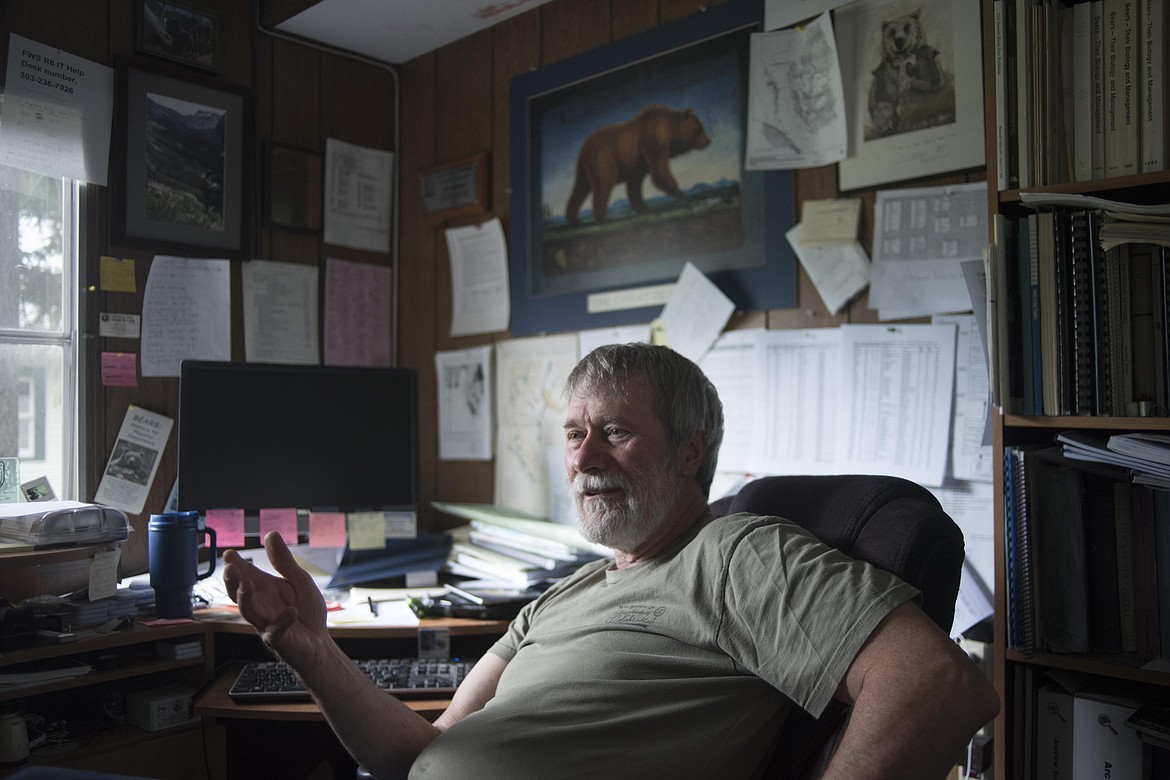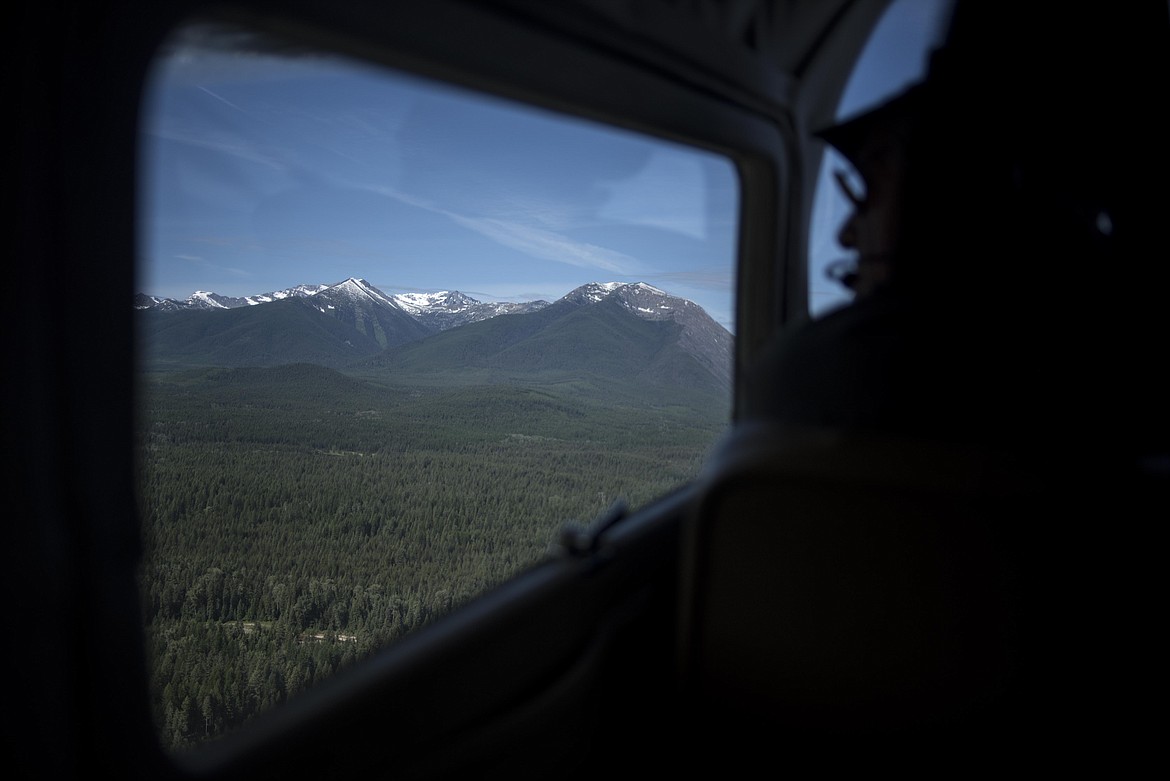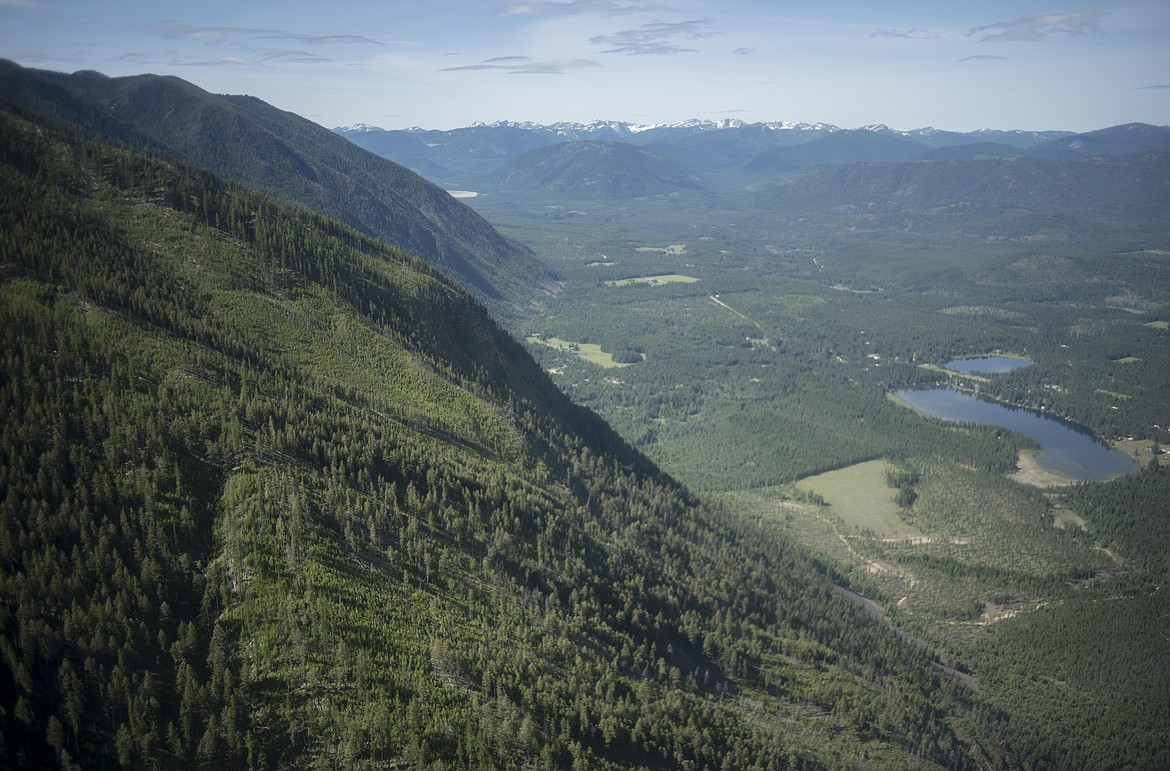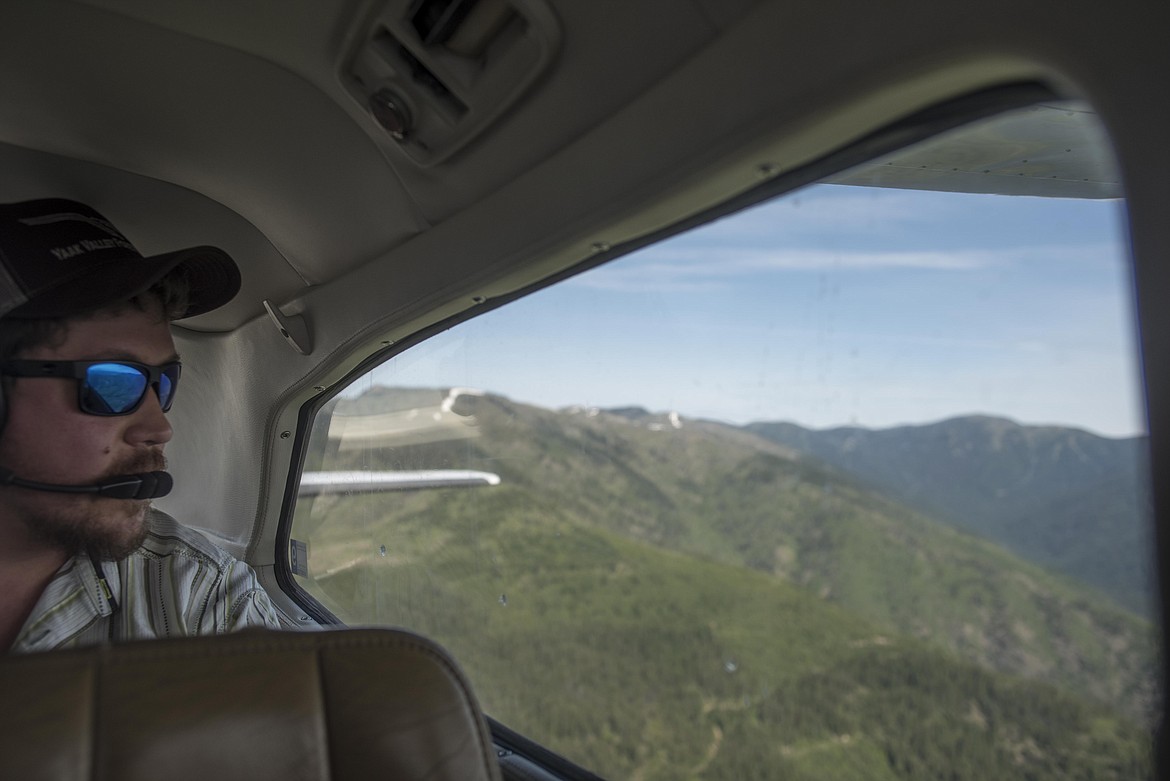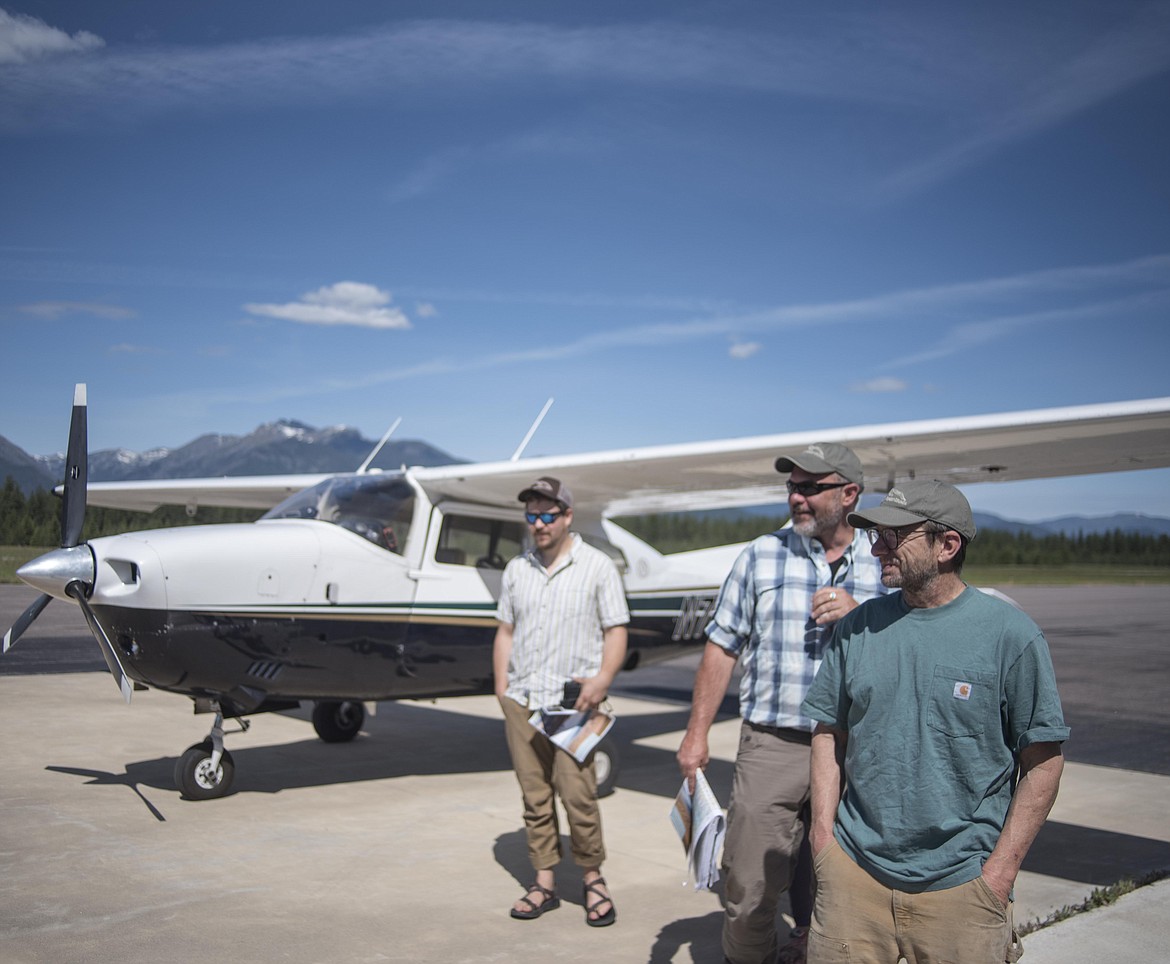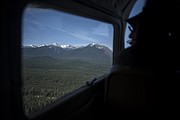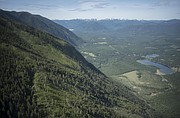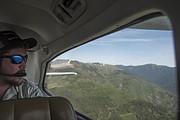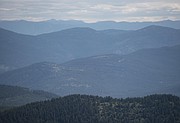Grizzly habitat at center of PNT debate
Editor’s note: this is the first in a series of stories intended to present the various views in the community on proposed changes to the Pacific Northwest Trail.
The proposal
The Yaak Valley Forest Council, a group which advocates for wildlife protection, proposed a re-routing of the Pacific Northwest Trail. Their hope is to allow the Yaak Valley’s endangered grizzly bear population a better chance to recover.
Changing the trail would take hikers across a more southern route, leading them over Cabinet Mountain peaks along the Kootenai River Valley. This is a change from the current trail, which goes straight through the Yaak area in northern Lincoln County.
The Yaak area is a chunk of land bounded by the Canadian border, the Kootenai River and the Koocanusa Reservoir. Its western side borders somewhat along the Moyie River and Highway 9.
‘Garden of the Yaak’
Rick Bass is one of a few hundred people living in Northwestern Montana’s Cabinet-Yaak area. To him, a resident of the quiet forests, grizzly bears are humbling but also a reminder of the detrimental effects to wildlife humans can have.
“What an unspeakable tragedy it would be to lose that one female that would lead to extinction,” he said. There are only 25 grizzly bears left in “the garden of the Yaak.”
Bass is a member on the Forest Council and an advocate for Grizzly bear preservation, as well as their recovery.
With such a low population of grizzlies, it is time to stop experimenting with how much bears can withstand before vanishing, he said. “We’re not playing with house money anymore.”
When hikers pass through areas such as the Yaak, it pushes bears further out of the alpine habitat, he said. Those high elevation meadows, which bears generally occupy, are very small in the Yaak.
Cumulative stressors like these are harming the grizzly bears and their population is not recovering, he said.
David Mattson, a wildlife biologist with a research focus in the Northern Rockies, said in a presentation that bears often die in the Yaak’s backcountry because they are pushed away from lowland areas in the Cabinet/Yaak, where there are lots of people.
The place they end up dying is where they continue to hang on, in the backcountry, he said.
The Yaak ecosystem is in a key and pivotal location, he said. It is “sort of a nexus” or a “hub” where bears can move back and forth, growing in population.
Bass said that moving the trail south helps keep grizzlies from descending into lower and lower habitats, it would make a measurable positive effect for the bears. What is important, is for no more harm to be done.
“You don’t know what you have until you lose it,” he said.
When hikers initially made the trail, they did not intend to cause problems, he said. They had a great vision and great dream, but “they didn’t do their homework.”
“They picked pretty places and went in a straight line,” he said.
Having hikers and bears put into small area is not fair to either, he said. In regard to the Yaak’s alpine habitat, the trail was not very well thought-out.
It’s not like Glacier National Park, which has a lot of alpine habitats, he said. Bears in the Yaak Valley do not have an alternative habitat to go to.
The current PNT trail displaces grizzly bears, he said. “It’s a big, complicated picture that was not addressed during the genesis of the trail.”
Now, locals are having to do the work to fix the trail, he said. This is high stakes and the sooner the trail can be moved, the better.
Bass thinks another benefit of the trail change is the potential for economic growth in both Libby and Troy. One of the primary beneficiaries of becoming a “trail town” is receiving visitors and through-hikers, he said.
Being located near the PNT allows people to become attracted to the area, fall in love with it and decide to move here. “It’s an incredible opportunity” for economic diversification in a “non-extracted, sustainable fashion.”
“It’s a pretty big win, if it can happen,” he said.
The current trail doesn’t service hikers in the Yaak the way that Libby and Troy could, he said.
For Bass, there is not just one specific reason why helping the grizzly is important to him.
“Grizzlies help me think about others than myself,” he said. “They’re so much like people; they’re the closest thing we have on this continent to ourselves.”
Africa has the great apes, North America has the “great bears,” he said.
“I love the negotiation they’ve made with the landscape, the way that they inhabit the world. They love the country that I love,” he said.
It is inappropriate to ask the bears to take on any more of a burden then they already have here, he said.
“I would be very bereft if there were not grizzlies in the Yaak, and I think we’re really close to that point,” he said.
Best for the bears
Wayne Kasworm, a U.S. Fish and Wildlife Service grizzly bear recovery leader, thinks that the trail change might unintentionally cause additional problems for the Cabinet/Yaak grizzly population.
Kasworm said he has been working to help recover grizzly bears in the region since 1983. Now, with the help of a bear augmentation program and natural reproduction, the population is actually increasing, he said.
It is happening at a pretty small, slow rate, but data suggests the population is increasing by roughly 1 percent a year, he said. Meaning, about one new bear is introduced into the region every other year.
That is the way bear populations grow, slowly, he said. Even in Yellowstone National Park or Glacier National Park, where everything is pretty good for bears, the growth rate is 2 to 3 percent.
In some of the best conditions, growth rates of about 5 to 6 percent are about as much as one can expect, he said. They are growing, even though it is not by much.
One fact does remain, grizzly bear populations cannot grow very fast, he said.
Kasworm estimated the population in the Cabinet/Yaak recovery area to be approximately 55 grizzly bears. About half of those bears are on the Yaak Valley side, where the PNT is.
Bass and Kasworm differ in their views on how to best help the grizzly bears, but they share one fundamental belief: it would be most beneficial for the bears if there was no trail at all.
“Quite frankly, if it were up to me, I’d prefer not to have a trail,” said Kasworm. “But that’s not my choice.”
Congress already designated the trail, he said. Adding, his job now is to look at what can be done to both live with the trail and still recover grizzly bears.
In Bass’ words, removing the trail is “not a very advantages political position to hold.” But it is the best solution for the recovery and preservation of grizzly bears.
If there is going to be a trail, people need to know that they are in bear habitat, said Kasworm. Recreators in the area should know and adhere to food storage regulations, as well as know how to identify different bears.
Not following those rules could lead bears to become familiar with people and create a conflict, he said. In turn, those bears would have to be removed from the area.
If the trail does get rerouted, Kasworm said he strongly supports a plan which is as direct as possible across the Cabinet/Yaak recovery areas. A meandering trail, which would take people more time to get through the bear habitat, has a higher chance of impacting the bears, he said.
“I don’t see a reroute as being able to avoid bear habitat,” he said.
Putting a new trail along Highway 2 or the Kootenai River Valley is the linkage spot for bears to go back and forth between the Yaak and Cabinet areas, he said. The cost of putting a trail there is connectivity.
If “more stuff” is put there, like a trail with a lot of people on it, it just adds to the “bottleneck effect” that roads, railroads and houses create for bears trying to pass through.
The goal is definitely to get bears going between both the Cabinet and Yaak areas for genetic connectivity between bears, he said. Putting more stuff in that passageway can be a hindrance to creating a natural gene flow.
With a small bear population, having genetic connectivity, diversity in a population is important for bears to persist and exist in the long-term, he said.


